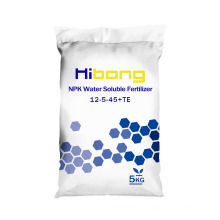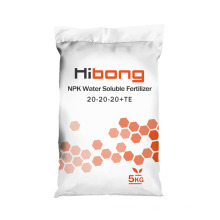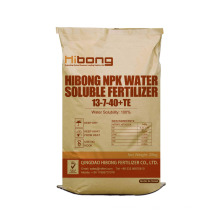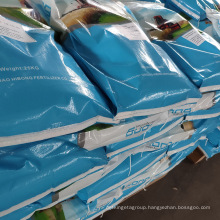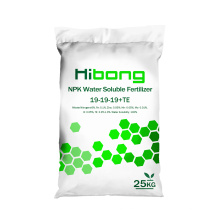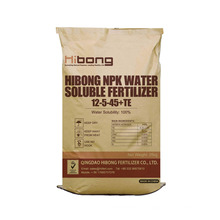Home > Industry Information > Application of nano titanium dioxide in coatings
Application of nano titanium dioxide in coatings
2021-05-09
It is precisely because nano TiO 2 has many singular properties that it has many unique uses that ordinary pigment TiO 2 does not have.
Due to its small particle size, high UV absorption capacity, stable optical properties, good dispersibility, large specific surface area and high surface binding energy, nano TiO 2 can be applied to coatings to stabilize coating performance and optical properties of coatings. , magnetic properties, electrical energy, mechanical properties are improved or display new functions. It can make the adhesion firm, the flexibility is improved, the impact resistance is enhanced, and the anti-aging ability is greatly improved. When the addition amount is 1%~3%, the adhesion is changed from 5 to 1; the flexibility is increased from 5mm to 1mm; the impact resistance is increased from 20kg·cm to 60kg·cm; the anti-aging time is increased from 500h to 2000h. . In particular, the flop effect is particularly noticeable. Its application in coatings mainly has the following aspects.
1. As an effect pigment used in goniochromatic effect automotive topcoats, this is the most important use of nano TiO 2 . If mica pearlescent pigment (aluminum powder or pigment) at 1: 1 or 2: 1 with the fight, will produce color effects, i.e., flip-flop effect. Such Metal flash coating, viewed from a different direction, can see different variants and blue iridescent flop; if fight with silvery white pearl titanium white pigment (pigment or aluminum) with, as a front view coating The appearance of the gold-tone metal is blue in the gaze or head-up, and the continuous change between the golden and blue light passes through all the curved surfaces and corners of the surface of the coating, thus increasing the fullness and color of the metallic finish. Aesthetics (see picture below). The effector color and unique optical properties of this effect pigment quickly became popular with automotive painters, making it the most high-grade pigment and used in topcoats for luxury cars. The addition of nano-TiO 2 to the metal flash paint for cars not only enables the coating to produce a good color effect, but also significantly improves the adhesion, impact resistance and weather resistance of the car paint. In 1985, BASF first used nano-TiO 2 for metallic car topcoats and patented it in 1985. In 1989, Ford Motor Company first succeeded in its metal flash car topcoat. Up to now, at least 11 metal glitter topcoats containing nano-TiO 2 have been applied in the world. At present, more than half of the cars in the world use metal glitter finishes.

Consumers tend to choose metallic gray, metallic silver, red and white for the color of the car. Nano-TiO 2 can brighten these colors and is therefore favored by automotive color matching experts.
In order to make the automotive topcoat containing pearlescent pigments produce an attractive opalescent effect, a three-coat system is required, so the coating process is complicated and repairing is difficult. Adding nano-TiO 2 not only eliminates the three-coat system. The interference layer in the middle is also easier to repair, and the resulting opalescence effect is better. The emergence of nano-TiO 2 has produced a new generation of automotive coatings.
Automotive topcoats prepared with nano-TiO 2 can be either a pigmented topcoat or a basecoat (intermediate paint) in a basecoat/clear topcoat system. The base of such a lacquer may be acrylic acid, alkyd, polyurethane, polyester or amino resin. It can be either aqueous or solvent based.
The optimum particle size of the nano-TiO 2 used is 20 to 30 nm, the transparency is preferably 8 to 10, and the ultraviolet absorption is preferably about 6. The aluminum powder pigments or pearlescent pigments used in combination should be automotive grade. The transparent color pigments in the middle paint are carbon black, blush, iron oxide red, iron oxide yellow, phthalocyanine blue, phthalocyanine green, pyrithion yellow, quinacridone red, carbazole dioxazine violet, indan Shilin blue, yellow alkanone yellow, etc. [next]
A formulation of a flop effect automotive topcoat containing only nano-TiO 2 and aluminum powder pigments is shown in Table 1.
Table 1 flop effect car top paint formula
raw material | Product name | Volume fraction/% | Thinner | content/% | Dry base /% | manufacturer |
Aluminum paste | SS5245-AR | 62 | Aromatic solvent gasoline | 6.71 | 4.2 | 1 |
Ultrafine TiO 2 | UV-TitanL530 | 100 | 1.00 | 1.0 | 2 | |
Thickener | Aerosil R812 | 100 | 1.00 | 1.0 | 3 | |
Cellulose acetate butyrate | CAB381.01 | 18 | Butyl acetate | 55.43 | 10.0 | 4 |
polyester resin | AlftalatAN951 | 70 | Solvesso100 | 14.37 | 2.5 | 5 |
Urea-formaldehyde resin | ResaminHF450 | 100 | 2.55 | 2.5 | 5 | |
Melamine resin | Maprenal MF590 | 55 | 2-butanol/xylene | 4.63 | 5 | |
Aromatic solvent gasoline | ShellsolA | 10.92 | 6 | |||
Butanediol | Butyl Oxitol | 0.67 | 6 | |||
Soybean lecithin | Colorol | 75 | Petroleum solvent oil | 0.12 | 0.1 | 7 |
Decalin | Dekalin | 1.56 | 8 | |||
Silicone oil | Baysilon | 10 | Xylene | 1.04 | 0.1 | 9 |
total | 100.0 | 31.4 |
A base paint (intermediate paint) of an aqueous flop-color automotive topcoat system containing only aluminum powder and nano-TiO 2 is prepared as follows.
A nano TiO 2 dispersion was first prepared. To this end, 70 g of nano TiO 2 such as UV-Ti-tan L530 was mixed with 45 g of distilled water and 2.5 g of Polysalz S.
Another portion of the basecoat is then prepared. For this purpose, Silberline Aqueous Aluminum Paste Aquavex 303AR-107Pn1 (69%) 50 g was mixed with 80 g of butanediol, 10 g of Dis-pex G40 (10% aqueous distilled solution), 140 g of distilled water and 280 g of Alberding KAPU 1012 (42%). 250 g of distilled water, 38 g of DMAE (5% aqueous distilled solution) and 38 g of Viscalex HV30 were mixed and added to the above mixture. The pH of the mixture was adjusted to 6.8. Then 20 g of distilled water was mixed with 45 g of DMAE (5% aqueous distilled solution) and added to the above mixture. The pH of the mixture at this point was about 7.6. Then 40 g of n-butanol was added.
The nano TiO 2 dispersion is mixed with the above mixture and appropriately dispersed to obtain the desired water-based automotive topcoat, and the spray viscosity is about 25 to 30 s.
Three kinds of gray and two kinds of gold floppy car top coats of nano TiO 2 containing transparent pigments have excellent opalescence effect. The composition and color of automotive effect paints containing color pigments are shown in Table 2.
Table 2 Composition and color of automotive effect coatings containing color pigments
Gray 1 | Gray 2 | Gray 3 | Gray 1 | Gray 2 | |
Ultrafine TiO 2 | 63.44 | 64.82 | 54.46 | 61.33 | 56.61 |
Carbon black | 2.53 | - | 13.65 | - | 2.15 |
Aluminum paste | 34.03 | 34.78 | 29.29 | 32.89 | 29.83 |
Blush | - | 0.40 | 2.60 | - | - |
Translucent red | - | - | - | 5.78 | 12.41 |
total | 100 | 100 | 100 | 100 | 100 |
Sight color | Light gray metal Exterior | silvery metal Exterior | Brown metal Exterior | Light gold metal Exterior | Medium dark gold metal Exterior |
Flash color | Light gray gold Exterior | silvery metal Exterior | Brown metal Exterior | Light gold metal Exterior | Medium gold metal Exterior |
Glimmering color | Blue-gray ceramic Exterior | Light purple ceramic Exterior | Dark blue-gray metal Exterior | Gray non-metal Exterior | Medium gold contractor appearance |
At present, aluminum powder pigments and pearlescent pigments produced in China have not been used in automotive topcoats, and nano-TiO 2 is still in the development stage. Adding various effect pigments to the resin to form a car and a topcoat is a big problem in itself. Coupled with the improvement of the quality of China's effect pigments, more work needs to be done. The development of China's floppy topcoats has a long way to go. [next]
2. The nano TiO 2 has the function of ultraviolet shielding, and is made into an anti-UV coating, and is applied to a place where ultraviolet shielding is required. If it is coated on the fabric of the parasol, it can be made into a UV-proof parasol; using nano-TiO 2 has effective UV filtering ability in all UV regions, plus its chemical stability (melting point greater than 1800 ° C, thermal decomposition temperature) More than 2000 ° C), non-toxic (LD 50 >5000mg / kg rat) and widely used. It can be used as a UV absorber in varnishes and light-colored paints. For example, containing 0.5% to 4.0% of nano-TiO 2 in varnish can prevent wood from blackening after being exposed to light. At the same time, it can be made into a building exterior paint with excellent weather resistance and improve the aging resistance of automotive paints. Adding nano-TiO 2 to the exterior latex paint can reduce the coating film from ultraviolet rays, improve the color, anti-aging and scrub resistance of the coating, thereby improving the quality of the coating.
3. Due to the strong interaction between the large surface area of nano-TiO 2 and the film-forming material and solvent, the rheology of the coating can be greatly improved, and it can be used in architectural coatings to improve the adhesion of the coating and prevent the coating. Sagging.
4. Due to the strong interfacial bonding force between the nano TiO 2 and the resin, the strength, hardness, wear resistance and scratch resistance of the coating can be improved.
5. Since nano TiO 2 is a particle having semiconducting properties, it is added to a resin and coated on a household appliance to form a coating layer, which has good electrostatic shielding properties. In order to prevent electromagnetic wave interference, electronic shielding coatings have emerged.
6. Since anatase nano-TiO 2 has photocatalytic properties and hydrophilicity, nano-TiO 2 coating is applied on the surface of glass, mirror, ceramic tile, aluminum alloy and other building materials, so that the surface of these materials can be illuminated after illumination. It is self-cleaning function such as dustproof, anti-fouling deposition, easy to wash, easy to dry, and has strong redox capacity, as well as functions such as purifying air and deodorizing, and can be made into antibacterial and mildew resistant interior wall paint. The bactericidal rate of nano-TiO 2 to different bacteria is above 92%, and its bactericidal effect does not gradually decrease or even disappear with time.
7. Using the photocatalytic properties of nano-TiO 2 to produce an environmentally friendly coating for photocatalytic purification of the atmosphere, which is applied to the surface of highways, bridges, buildings, billboards, etc., in sunlight or indoor natural light. under the action, NO x catalyst atmosphere can be converted to nitric acid. And after the coating has a reduced catalytic activity, the catalytic activity can be restored by rinsing with water. Sulfides produced in terms of its elimination of the catalytic converter factory atmosphere and pollutants such as NO x in the indoor and outdoor, and elimination of fossil fuels (petroleum and natural gas) and diesel engines, have potential applications.
In addition, nano-TiO 2 is also used in military stealth coatings, insulating coatings, transparent wear-resistant coatings, electrostatic shielding coatings, and barrier coating nano coatings for packaging.
Petroleum Resin (Hydrocarbon resin) is a kind of thermal plasticizing hydrocarbon resin produced by C5, C9 fraction.It is not a high polymer but a low polymer with the molecular weight between 300-3000. Featured by acid value, easy mutual solubilities, resistant to water, resistant to ethanol and chemicals.
Generally, the petroleum resins are not used independently, but have to be used together with other kinds of resins as promoters, adjusting agents and modifiers in hot-melt adhesive, pressure-sensitive adhesive, hot melt road marking paint, rubber tires and so on.
Petroleum Resin, Aliphatic Petroleum Resin, Petroleum Resin Adhesive, Petroleum Resin Paint Coating
Chemicals ,Fertilizer Co., Lt d http://www.hnchromiumoxidegreen.com

